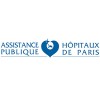
Covid-19 Patients With Hypertension and/or Kidney Diseases
COVID-19Hypertension1 morecorrelation between COVID-19 and Hypertension and/or kidney diseases. Assess Assess the effect of COVID-19 on patients with Hypertension and/or kidney diseases. Assess the effect of hypertension and/or kidney diseases on COVID-19 presentation. Assess the outcome of COVID-19 in patients with hypertension and/or kidney diseases

Effect of N-Acetylcysteine on Neutrophil Lymphocyte Ratio And Length of Stay In COVID-19 Patients...
COVID-19This research is a study that compares the administration of N-acetylcysteine at various doses with the outcomes of COVID-19 patients, namely the neutrophil-to-lymphocyte ratio and length of stay.

Aerosolized Versus Intravenous Colistin-based Antimicrobial Regimens in Hospitalized COVID-19 Patients...
Secondary Bacterial Infection in COVID-19 PatientsSecondary bacterial pathogen infection has been demonstrated to aggravate COVID-19 clinical outcomes. Bacterial infections acquired during a hospital stay are likely resistant to several antimicrobial medicines, making COVID-19 patient management difficult. As a result, it is believed that aerosolized colistin might be a viable choice for treating secondary bacterial infections caused by gram-negative resistant strains in individuals who also have COVID-19 infection.

International Validation of Wearable Sensor to Monitor COVID-19 Like Signs and Symptoms
COVID-19Deploy wearable COVID sensor to collect high resolution physiological data (temperature, cardiac, respiratory and physical activity) from COVID positive patients. Use collected data to train algorithm for assessing the risk of individuals presenting with symptoms suggestive of COVID-19.

Clinical Use of EVUSHELD as Pre-exposure Prophylaxis in Real-world Setting in Gulf Cooperation Council...
COVID-19Study on Clinical Use of EVUSHELD (AZD7442) as Pre-exposure Prophylaxis in the Real-world Setting - A Multi-Centre Observational Prospective Study to Determine the Utilization and Clinical Outcomes of EVUSHELD in Gulf Cooperation Council Countries

Low Versus Moderate-intensity Aerobic Training in Post-discharge COVID-19 Subjects
COVID-19Aerobic Exercises1 moreThe main purpose of this study is to compare the impact of low versus moderate-intensity aerobic training in post-COVID 19 older subjects. On exercise adherence and changes in physical fitness, psychological status, and quality of life after a 10-week intervention.

COPE - COVID-19 in Pregnancy and Early Childhood
Sars-CoV2Covid-194 morePurpose: The emergence of a new coronavirus SARS-CoV-2 causing a novel infection in the human race resulting in a world-spanning pandemic came as a surprise and at a tremendous cost both for individual human lives as well as for the society and the health care sector. The knowledge on how this new infection affects both the mother and the unborn child as well as the outcomes for the mother and the child in the long run are unknown. What is known is based on case-reports and small case-series solely. Both the coronaviruses causing Middle East Respiratory Syndrome (MERS) and Severe Acute Respiratory Syndrome (SARS) can cause a threat to pregnant women and their offspring, which leads to the question whether this could be the case also for SARS-CoV-2. Aims: To establish a biobank of biological material from infected as well as non-infected pregnant women and their offspring. To combine this biobank with Swedish quality and health care registers, computerized patient charts and questionnaire data, enabling both short-term follow up, such as obstetric outcomes, as well as long-term outcomes both for mother and child. To study how the pandemic situation affects both the mother and her partner in their experience of pregnancy, childbirth, and early parenthood. Design: A national Swedish multicentre study. Women are included when they have a positive test for SARS-CoV-2 or a clinical suspicion of coronavirus disease 2019 (COVID-19) (COVID-19 group). Pregnant women without COVID-19 symptoms will be included at their routine visits (Screening group). Blood samples and other biological material will be collected at different time-points. Additional predictors and outcomes are collected from the Swedish Pregnancy Register as well as obligatory Swedish health registers. The biobank and its linkage to health registers through the Swedish personal identification number will enable future research. Child development will be followed during the first year of life by questionnaires to the parents. Womens' and their partners' experience of childbirth and parenthood will be studied in form of questionnaires as well as in form of interviews. Conclusion: This project will help obstetricians and neonatologists better recognize clinical manifestations of the virus, identify possible risk factors during pregnancy and tailor therapies alongside providing right level of surveillance and management during pregnancy, delivery, and child health care.

Longitudinal Population-based Observational Study of COVID-19 in the UK Population
COVID-19COVIDENCE UK is a population-based observational longitudinal study that has the following objectives: To determine risk factors for incident COVID-19 and for adverse outcomes of COVID-19 in the UK population To characterise the natural history of COVID-19 in the UK population To evaluate the impact of COVID-19 on the physical and mental health of the UK population To provide a resource from which to identify potential participants for future clinical trials, and to use data collected in COVIDENCE as comparison or control data for trial participants who have been randomised to receive one or more interventions.

Efficacy of Intravenous Almitrine in Reducing the Need for Mechanical Ventilation in Patients With...
Covid 19Hypoxemic Respiratory FailureThe COVID-19 outbreak is associated with a surge in ICU bed requirement and substantial mortality (estimated between 0.5% and 1%). Admission in the intensive care unit (ICU) and need for mechanical ventilation is reportedly associated with an estimated hospital mortality of more than 30%. Furthermore, the surge in ICU bed requirement is a worldwide-shared issue, leading to sub-optimal ICU management. In acute respiratory failure due to COVID-19-related pneumonia, vasoplegia with vascular enlargement inside the lung lesions and dilation of small vessels seen on chest CT scan largely account for severe hypoxemia whose physiological response is hyperventilation leading to hypocapnia. Almitrine, initially described to reduce intrapulmonary shunt by enhancement of hypoxic pulmonary vasoconstriction in combination with inhaled nitric oxide (iNO), redistributes pulmonary blood flow from shunt areas to lung units with normal ventilation/perfusion (VA/Q) ratio. Low dose of intravenous almitrine (2 µg.kg-1.min-1) alone also improves oxygenation (without combination with iNO) by selective pulmonary vasoconstriction of precapillary pulmonary arteries perfusing lung areas exposed to a hypoxic challenge with a slight increase in mean arterial pulmonary. Therefore, our hypothesis is that 5 days of low dose of almitrine therapy may improve the ventilation-perfusion (VA/Q) ratio at a relatively early stage of this specific lung disease and limit respiratory worsening and subsequent need for mechanical ventilation.

COVID-19 Convalescent Plasma
CoronavirusThe purpose of this study is to assess the feasibility of delivering anti-SARS-CoV-2 convalescent plasma to hospitalized patients with severe or life-threatening COVID-19. Beyond supportive care, there are currently no proven treatment options for coronavirus disease (COVID-19), the infection caused by Severe Acute Respiratory Syndrome Coronavirus 2 (SARS-CoV-2). Human convalescent plasma is an option for treatment of COVID-19 and could be rapidly available when there are sufficient numbers of people who have recovered and can donate high titer neutralizing immunoglobulin-containing plasma. Hypothesis: Collecting and administering convalescent plasma requires a level of logistical coordination that is not available in all centers. Objective: To establish feasibility for a hospital-based integrated system to collect and administer convalescent plasma to patients with severe or life-threatening COVID-19.
